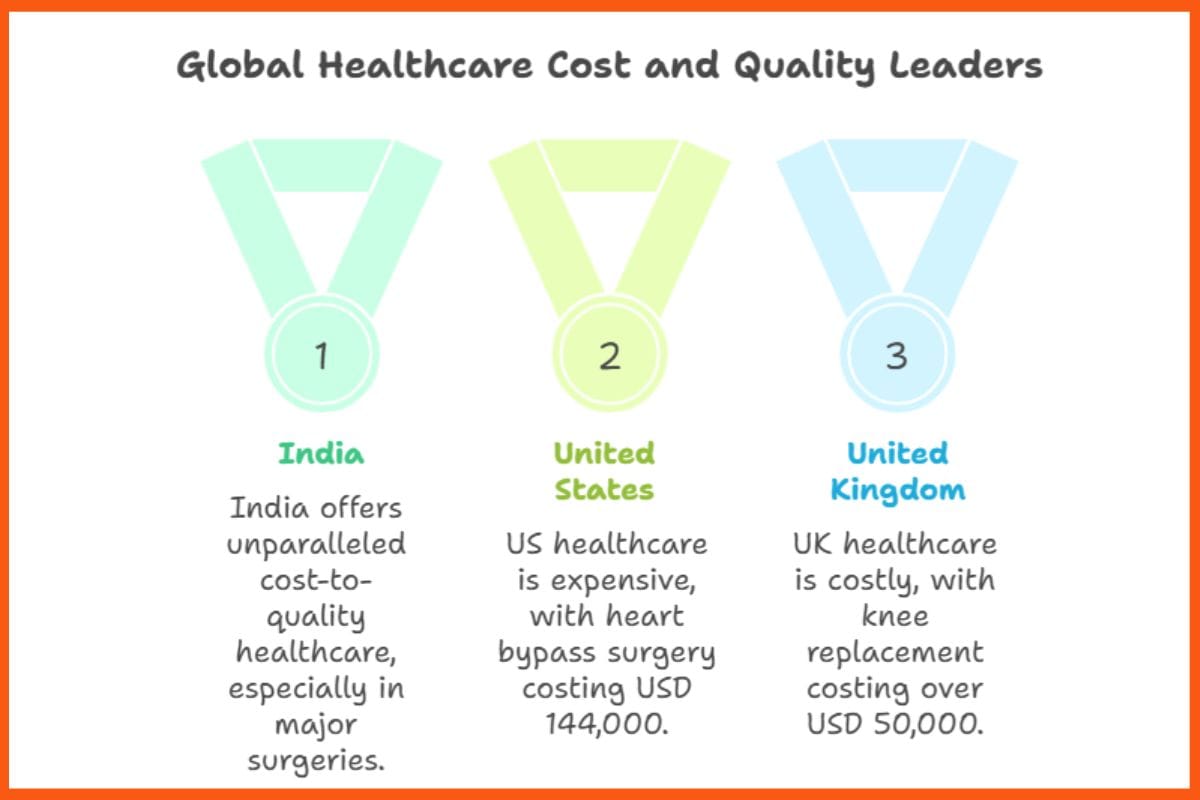This article has been contributed by Ms. Sonam Garg Sharma, CEO and Founder, Medical Linkers
India is an emerging power in the international healthcare sector and the presence is increasingly evident in numbers, investment and flow of international patients. Hospitals equipped with the latest cutting-edge technology, qualified medical staff, increasing demand for top-notch care all signify India’s significance as a medical tourism hub on the global stage.
To scale this potential, India is continuously working on harmonizing infrastructure, developing government policies and improving patient experience within both public and private sectors.
Medical Tourism Market Growth in India
India’s medical tourism sector has seen a slow expansion in the last few years. A study estimates the medical tourism industry will reach USD 22.56 billion by 2030, growing at a rate of 8.13% CAGR.
Government efforts such as the Heal in India initiative for international wellness seekers is driving this momentum. In 2022, over 650,000 medical visas were granted, supported by digital patient portals. These structural initiatives are significant in reducing hurdles international patients face while travelling and also seek to improve their overall experience.
India’s appeal lies in the value proposition that it offers. Patients from countries like Bangladesh, Iraq, Yemen, Afghanistan, and all across Africa are shifting towards India not only because of its cost advantage but also due to its clinical superiority, according to a recent report by The Economic Times. As many as 327,000 patients from Bangladesh came to India to receive medical treatment in 2022 alone.
India is attractive to a lot of international patients and a major reason for that is the value proposition the country offers. According to The Economic Times, patients from nations such as Bangladesh, Iraq, Yemen, Afghanistan and all over Africa are choosing India for their medical treatments. This is due to India proving its clinical superiority while also being more affordable than other countries.
Developing the Skilled Workforce and Education Ecosystem
Yet another key driver of India’s emergence as a world medical tourism hub is the presence of a huge and highly qualified pool of medical personnel. India graduates over 70,000 physicians and almost 40,000 specialists annually through its enormous medical college network, several of which are internationally accredited. Also, more and more Indian doctors undertake higher education and fellowships overseas, returning with international best practices to share.
The academic environment is also responding to the increasing needs of medical tourism. Institutes of higher learning are now providing specialized courses in international patient care coordination, hospital administration, and medical tourism management. The specialized training means that hospitals are no longer simply equipped with skilled clinicians but also with professionals able to manage the logistical and cultural demands of foreign patients.
In addition, partnerships with international institutions, knowledge transfer schemes, and telemedicine alliances with African, Middle Eastern, and Southeast Asian nations enable Indian hospitals to reach further and become better known. They are also encouraging pre- and post-treatment continuity of care, which is becoming the hallmark of successful medical tourism. By developing its human capital, India is creating a secure base for long-term global leadership in healthcare delivery.

Cost Advantage and Global Competitiveness

India is still unparalleled when it comes to healthcare cost-to-quality. Heart bypass surgery as a major procedure, for example, costs about USD 5,000 in India versus USD 144,000 in the US. A knee replacement in India is about USD 6,000 compared to more than USD 50,000 in the UK.
These cost benefits are in addition to the lack of waiting times, access to internationally trained physicians, and application of cutting-edge medical technologies like robot-assisted surgery, AI diagnostics, and minimally invasive procedures. Medical tourists are usually treated by specialists who were trained or certified in the U.S., UK, or Europe, greatly building trust and satisfaction among patients.
India also has the distinct advantage of integrated well-being. Ayurveda, yoga, naturopathy, and alternative medical therapies are being packaged along with post-recovery treatment plans more and more. The combination of clinical care and whole-person healing provides India with a double advantage over conventional Western medical systems.
The health system of the nation is increasingly empowered by digital technology. The use of electronic health records (EHR), e-patient onboarding, and tele-consultation platforms has greatly streamlined cross-border patient coordination. Most hospitals now have specialized international patient departments, multilingual concierge services, and even remote post-discharge monitoring.
Infrastructure and Ecosystem Evolution
India has come a long way in enhancing the health infrastructure. India boasts more than 1,600 NABH-accredited hospitals and an increasing number of Joint Commission International (JCI)-accredited centers, having global standards. These facilities are disbursed across Tier I and Tier II cities, making it easier for healthcare to reach near regional airports and minimizing transit time for patients.
Chennai, commonly referred to as the “health capital of India,” welcomes 40% of India’s medical tourists. Delhi, Mumbai, Hyderabad, and Bengaluru are also emerging as major centers for their super-specialty hospitals and internationally accredited medical centers.
The e-Medical Visa scheme, now available for more than 156 countries, has long-term, multiple-entry visas for patients and escorts. Programs under the National Health Authority are attempting to standardize pricing and enhance transparency. Both of which are critical for global competitiveness.
Public-private partnerships are becoming increasingly important for stretching capabilities. From facilitation counters in airports for medical tourists to hospital-hotel associations for recuperation packages, these collaborations are making treatment episodes smooth healthcare experiences. The presence of air ambulances and medical evacuation services only increases India’s appeal for high-acuity treatment.
In the future, the issue is not in pulling in foreign patients but in having a uniformly high quality of care among providers, quicker regulatory approvals for overseas insurance partners, and establishing trust through transparent clinical outcomes.

